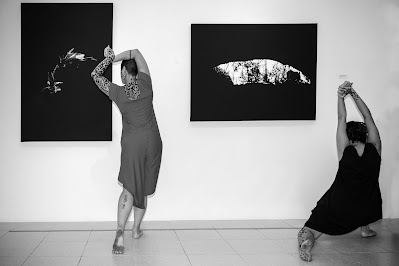Hidden in the Way - Aisthesis of Pareidolia
Pamela Merrill Brekka, PhD
University of South Florida, Tampa.
University of South Florida, Tampa.
Hidden in the Way - Aisthesis of Pareidolia, 2022 [1]
Dan Pelegrin is no ordinary story teller. Neither is he just a maker, fluent in a range of media. Dan Pelegrin is a wizard. He is able to conjure from thin air miraculous creatures and fantastic beasts. Like medieval icons, considered divine ‘unmade’ objects, Pelegrin’s images simultaneously negate—and then highlight—their mediated nature. Hidden, in the Way, is the story of this complicated, magical paradox.
Pelegrin spent his youth in Marialva, Brazil, conjuring machines, humanoids and dragons. His current work, such as Rocks, 2015, Dry Leaf Dragon, 2012, Clothes Rack, 2020, e Landscape with Rabbit, 2018, reflects his early formation. It is a catalogue that presents deeply meditative responses to both nature and the supernatural, as well as human intervention in the natural world.
By definition art is the opposite of nature. Art is contrived, mediated, manipulated. Art changes nature, undoes, manufactures. Here’s the paradox before us: in Pelegrin’s world, art and nature are one and the same. Pelegrin’s complicated images, at once understandable, inviting and familiar, provide little evidence of process, artifice, human intervention. The image says, “enter—this is a safe space”, and then the monster appears.
Pelegrin masterfully complicates, toys with, the history and nature of representation via pareidolia. In the sixteenth century, Leonardo da Vinci defined pareidolia as images that are simultaneously hidden but also apparent. These are random images which one is meant to discern for oneself in the natural fiber of creation. Leonardo associated this activity, this way of looking, with artistic invention. Paradoxically, once the artist registers such “random” images, they become artifice as a result of human intervention.
Throughout history artists and art critics grappled with the role of artifice, overt artistic intervention. Should art trick the eye as though looking through a window onto a real landscape, or should the artist leave their mark—draw attention to praxis as a type of signature—the artist thus ever present in the life of the work?
Notions of nature versus artifice dominated late sixteenth-century thought, and were manifest, for example, in the elite wunderkammer culture. Theologians argued that no man can acquire the true knowledge which is concealed, lying hidden in nature and the natural world. Yet collections of natural objects (cabinets of wonder) could assist the curious mind to “locate human activity within the natural world, or rather in regard to God’s eternal presence as manifested through his work as the supreme artisan of nature.” (Georg Hoefnagel, Archeypa, 1592). This is a reference to the complicated relationship between model and image, non manufactum (God’s creation) and manufactum (artifice, the creation of man).
Machines, humanoids and dragons. In some ways, an insightful summary of the breadth of Pelegrin’s impressive oeuvre. Machines as a reference to artifice, the contrivance of man; humanoids as central to God’s creation, and dragon’s—the realm of magic.
As reader-viewers of this volume will observe, Pelegrin’s work engages the ancient paradigms here considered in a deeply meaningful way. Insignificant art is, among other things, a copy of something else, bereft of meaning. Relevant art, by contrast, confounds understanding with dynamic, complicated layers of meaning. Dan Pelegrin conjures icons, not art—divine images, begotten not made, seemingly devoid of process but richly imbued with meaning—unmade, magical things.
_________________
[1] Photograph from opening performance the exhibition Hidden in the Way - Aisthesis of Pareidolia held at the Art Museum of the Federal University of Ceará in November 2022 curated by Pamela Merrill Brekka. Photo by Tais Rodrigues, performance by Emyle Daltro and Dani Yara Cantillo Castrillón.





Comentários
Postar um comentário